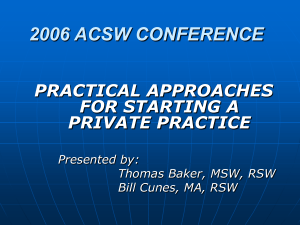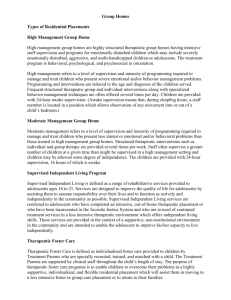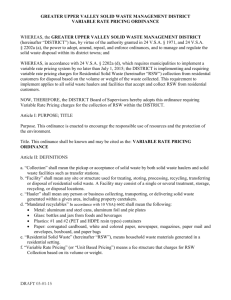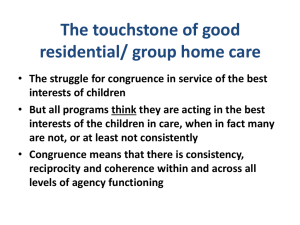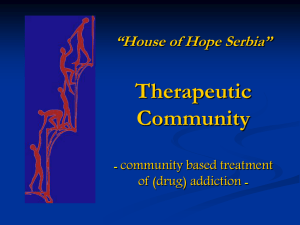Design and development of a computer game based intervention
advertisement
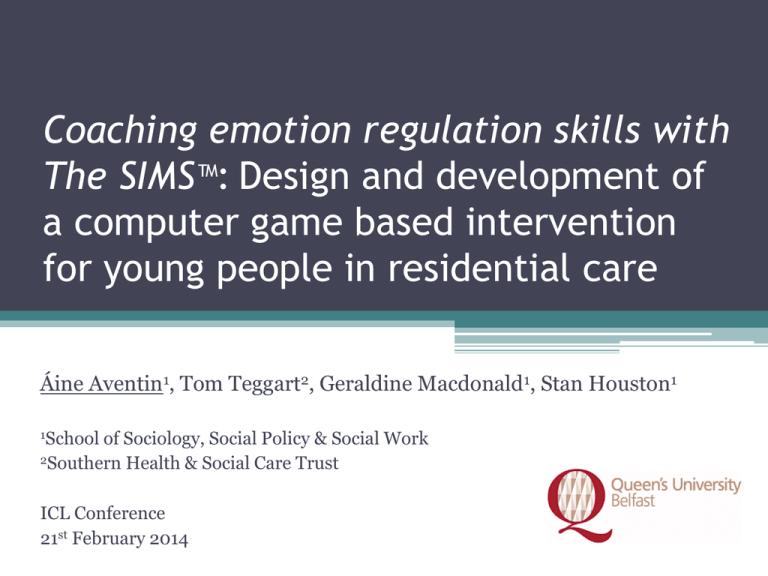
Coaching emotion regulation skills with The SIMS™: Design and development of a computer game based intervention for young people in residential care Áine Aventin1, Tom Teggart2, Geraldine Macdonald1, Stan Houston1 1School of Sociology, Social Policy & Social Work 2Southern Health & Social Care Trust ICL Conference 21st February 2014 Overview • Background & Aims • Intervention design process • The intervention • Key Findings • Future Directions Background • Mental illness among young people in care • Reluctance to engage in traditional therapy • A call for engaging interventions delivered in community settings • Therapeutic approaches to social work in children’s homes across Northern Ireland • Computer games under-explored Aims • To design and develop a therapeutic intervention incorporating a computer game suitable for use by social workers and young people in residential children’s homes; • To explore its acceptability and potential therapeutic impact; and • To explore the factors which acted as facilitators of and barriers to engagement and successful implementation. Research Design II. Feasibility/piloting 1 Testing Procedures 2 Determining sample size 3 Estimating recruitment/retention I. Development 1 Identifying the evidence base 2 Identifying/developing theory 3 Modelling process and outcomes IV. Implementation 1 Dissemination 2 Surveillance and monitoring 3 Long term follow-up III. Evaluation 1 Assessing effectiveness 2 Understanding change process 3 Assessing cost-effectiveness Medical Research Council (2008) Intervention Design Process • Pragmatic, Systematic & Iterative • Involving: - Literature reviews - Consultation with key stakeholders - Preliminary logic modelling - Exploratory research in 3 children’s homes • Resulting in: - The SIMS intervention & preliminary indications of acceptability - Model of potential barriers and facilitators of implementation effectiveness - Intervention design & implementation logic models The Intervention Computer Game played by young person alongside a residential social worker Emotion Regulation Skills Coaching offered by the social worker to the young person while playing the game Identification of emotions Modulation of emotions Expression of emotions The Intervention Riley looks frustrated! Why do you think he got so angry? How do you think Mike is feeling? What might she do to calm down? How would you feel if that happened to you? What would you do in that situation? The Intervention What is “Emotion Regulation”? • It’s about understanding and managing our emotions • Everyone does it... • We have to learn to do it (just like we learn to talk, write or tie or drive) • Some people are not taught how to do it properly when they are children The Therapeutic Use of Computer Games in Residential Child Care Version 1 10.01.10 Key Findings • A word of caution • Acceptability • Potential uses • The challenges to introducing therapeutic innovations in residential child care contexts Acceptability “good” (YP); “really good” (YP); “something different”, “interesting” (RSW); “fun” (RSW) “[The game] was a load of shite” (YP); “It’s nearly too complicated” (RSW); “There was a lot of preparation” (RSW) Acceptability He was very keen. [Andy] would be very open to new experiences, meeting new people and trying new things. He likes computers as well. He likes computer games. So there’s an interest there too. (RSW) I identified some concerns about Oliver and his participation before [implementation] and thought that it wouldn’t be right for Oliver’s particular needs. Some aspects of that were wrong and some were right. Oliver did engage with it for a prolonged period, but completely at his own determination. He would only do it on his own and wouldn’t engage in the dialogue that would be associated with a sort of more therapeutic response. (RSW) Potential Uses It sort of gave me an insight to what I needed to actually do and whatever, whenever I go out into the world. (YP) R: What did you like most about it? Sam: The game just. It gave me something to do. R: It gave you something to do of an evening type of thing. Is that what you mean? Sam: Yeah. R: What would you normally be doing if you weren’t playing the game? Sam: Sitting around probably. (YP) Potential Uses I mean he’s a high risk taker, major high risk taker. There’d be a lot of concern about his behaviours and potential for misadventure or, you know, even disability or fatality in terms of his behaviours. So at least when he was engaging on a regular basis with the game that did reduce his high risk behaviours. (RSW) When that game was being played he’d be very very focused on it and he was very calm. He wasn’t agitated in any way when he was playing the game. (RSW) Challenges to engagement & successful implementation If I’m honest it wouldn’t have been a huge priority. We would have played as much as we could but there was a lot going on for him the last six months. (RSW) [Oliver] is very different from a lot of kids. He’s a real individual when it comes to it. He’s very self-determined. He’s very headstrong. He doesn’t like authority. He doesn’t like therapeutic approaches. I can sort of understand, maybe, where he’s coming from because he’s had therapy to it’s coming out of his ears. (RSW) Challenges to engagement & successful implementation I suppose in general there would be staff here who would be into more therapeutic approaches than others and others would have a more practical outlook on residential so there might be some resistance to that. (RSW) You know you’re living with the young person so in one way you’re the person whose imposing sanctions and discipline, you’re sort of a parental figure, so they mightn’t be able to sit down and open up. (RSW) Model of Implementation Effectiveness Successful Implementation (Enabling Forces) Intervention Research Process Researcher Residential Social Worker Young Person Context CONSIDERING IMPLEMENTATION Intervention Research Process Researcher Implementation Failure (Constraining Forces) Residential Social Worker Young Person Context Implementation Logic Model 1: Inputs 2: Activities 3: Outputs • Collaborative partnerships with key stakeholders in children's homes • Participants for consultation • Participants for implementation • Laptop computers or games consoles • Game software • Identify evidence base and theory through literature reviews •Design research, intervention & implementation protocol in consultation with stakeholders •Identify intervention 'champion' in the children's homes •Recruit participants willing to implement the intervention •Design and deliver training course to residential social workers •Secure laptops/consoles and games •Residential social workers implement intervention •Conduct pilot study •Conduct singlesubject evaluation & process evaluation •Pilot study data indicating the feasibility and acceptability of the intervention in context • Single-subject evaluation study data indicating efficacy of intervention •Process evaluation data indicating implementation effectiveness •Intervention theory of change model •Therapeutic tool suitable for use with young people in residential care •Implementation protocol •User manual •Training protocol 4: Outcomes • Increased engagement of young people in therapeutic work • Increased involvement of residential care staff in delivery of therapeutic work • Increase in emotion regulation skills among young people 5: Impact • Improved mental health outcomes and coping for young people in residential care Future Directions • Further development work • Further exploratory research to examine its potential uses • Evaluation research to examine therapeutic impact Conclusion You can discover more about a person in an hour of play than in a year of conversation. – Plato, c. 400 BCE Aventin, Á. (2013). The Challenges of Introducing Computer Games for Therapeutic Use in Residential Child Care: An Exploratory Case Study. PhD Thesis. Queen’s University Belfast. a.aventin@qub.ac.uk
